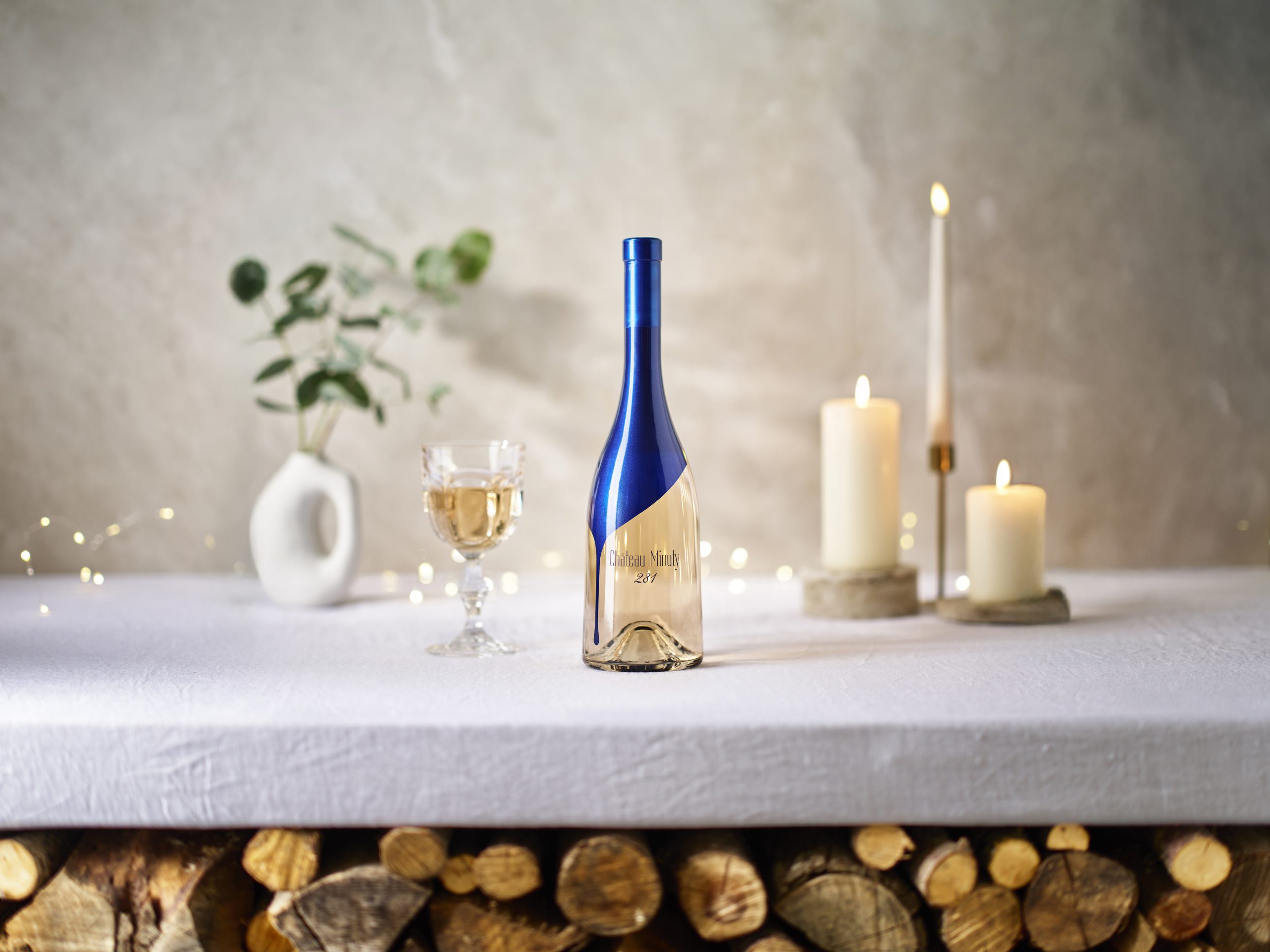Bordeaux 2022 en primeur: Pauillac, a small harvest of high quality fruit
Continuing his journey down the Gironde, Bordeaux correspondent Colin Hay’s appellation tour stops in Pauillac, to find it has fared well in 2022. Unlike in 2021, it is perhaps one of the most homogeneous appellations of the vintage, he reports.

Last year I suggested that Pauillac was something of a mixed bag, producing many of the Medoc’s wines of the vintage more by virtue of the sheer quality of its terroirs and its relative size than due to any particular deftness in handling the vintage’s multiple challenges.
In 2022 I have a rather different sentiment. Overall, in 2022, Pauillac has fared very well indeed. Crucially, and unlike 2021, it has done so at all class and price points. Indeed, Pauillac and St Julien are, for me, perhaps the two most homogeneous appellations of the vintage. I was not expecting to be writing that when I left Paris to start my marathon of en primeur tastings almost a month ago.
In 2021, the greatest wines of the appellation were based almost entirely on Cabernet Sauvignon, with Lafite and Latour at 96%, Mouton and Haut-Bages Libéral at 90% and Pichon Comtesse de Lalande containing only 2% Merlot. That trend continues, even if there is a little more Merlot in the greatest wines of the appellation this year. Mouton is the exception, having the second highest ever proportion of Cabernet Sauvignon in the final blend (at 92%). Lafite and Latour are also both over 92% Cabernet Sauvignon. Each has produced a magisterial wine with stupendous aging potential in a vintage where that is not always the case.
As ever it is useful, at least briefly, to look at the meteorological data. Table 1 compares rainfall levels between the leading appellations over the year.
|
Pre-budburst (Nov-March) |
Véraison to harvest (August-October) |
Total | |
| Margaux | 381 (-22.8%) | 58.5 (-53.0%) | 802 (-12.3%) |
| St Julien | 364 (-25.0%) | 61.3 (-47.7%) | 780 (-12.2%) |
| Pauillac | 364 (-25.0%) | 61.3 (-47.7%) | 780 (-12.2%) |
| St Estèphe | 415 (-14.6%) | 74.4 (-40.3%) | 889 (-1.1%) |
| Pessac-Léognan | 445 (-8.4%) | 57.7 (-50.7%) | 764 (-14.6%) |
| St Emilion | 558 (+14.8%) | 67.7 (-44.0%) | 886 (-1.9%) |
| Pomerol | 541 (+9.7%) | 51.2 (-57.5%) | 871 (-3.9%) |
Table 1: Rainfall during the vintage (mm, relative to 10-year average)
Source: calculated from Saturnalia’s Bordeaux 2022 Harvest report
It reveals a number of things. First, it makes it crystal clear to us that the meteorological station that Saturnalia use for such data is the same for Pauillac and St Julien (the data is the same!). That is useful in a way, for it reminds us of the dangers of over-generalisation from average data of this kind.
This notwithstanding, it also shows us that Pauillac (and St Julien) experienced very little rainfall in the winter preceding the growing season (less, in fact, that another of the leading appellations) and that it saw only 50% or so of average annual rainfall in the period between véraison and the harvest. Only Pessac-Léognan and Margaux (by a whisker) experienced lower total annual rainfall.
The drought conditions were, then, intense and incessant and they were established very early on. Somewhat paradoxically, that may actually have helped.
For as Table 2 shows, in the end Pauillac fared better – if only marginally – in terms of overall vineyard yields than its Médocain appellation neighbours – with the highest average vineyard yield (of 34.8 hl/ha) and the smallest reduction in vineyard yield relative to the ten-year average (down ‘just’ 12.3%).
| 2018 | 2019 | 2020 | 2021 | 2022 | 10-year average | Relative to 10-year average (% change) | |
| Margaux | 37.4 | 49.2 | 36.3 | 38.6 | 31.3 | 39.7 | -21.2 |
| St Julien | 42.6 | 45.5 | 34.3 | 35.2 | 34.3 | 40.1 | -14.5 |
| Pauillac | 38.5 | 46.7 | 37.4 | 35.1 | 34.8 | 39.7 | -12.3 |
| St Estèphe | 44.6 | 49.7 | 41.2 | 40.7 | 31.5 | 43.4 | -27.4 |
| Pessac-Léognan | 36.9 | 47.2 | 34.6 | 30.7 | 35.7 | 38.5 | -7.3 |
| St Emilion (GC) | 39.7 | 43.0 | 36.7 | 27.5 | 41.2 | 37.2 | +10.7 |
| Pomerol | 36.2 | 43.0 | 39.8 | 28.9 | 32.3 | 36.1 | -10.5 |
Table 2: Average vineyard yield by appellation (hl/ha)
Source: calculated from Customs data compiled by the CIVB Service Economie et Etudes

Partner Content
This is largely because the drought conditions were established so early that the vines searched from the start from water from below (rather than extending their root systems near the surface), building smaller canopies and thereby limiting transpiration.
Pauillac vineyards thus produced a relatively small crop of tiny and highly concentrated berries that were picked in optimal conditions – in short, a small harvest of high quality fruit.
The rest follows. The wines are excellent and quality is relatively homogeneous.
Mouton Rothschild has, for me, produced a candidate for the left-bank wine of the vintage (though there are others that we will come to as we continue our Médoc en primeur journey further south). It is bright, vivid, energetic and dynamic yet at the same time so restrained and so elegant.
Pichon Comtesse de Lalande runs it very close for Pauillac wine of the appellation as it now has a habit of doing. It is, like the 2020, a wine of supreme elegance, harmony and poise.
Lafite Rothschild and Latour are also quite brilliant in their own distinct and, in this vintage, quite discrete ways. Each has great aging potential and each is, for now at least, a little closed and introspective.
Lynch Bages is much more immediately captivating and was on sparkling form when I tasted it. I have not tasted better from this serial star of the appellation.
Pichon Baron sees a subtle change in style and is both brilliantly expressive of itself and its terroir whilst also seeming to find a new energy and eloquence.
Other coups de coeur include an ethereal Grand-Puy Lacoste, a stunningly bright and brilliant Haut-Bages Libéral and a beautifully composed, subtle and elegant Haut Batailley.
Le Petit Mouton is, for me, the star second wine of the vintage, certainly on the left-bank.
Before turning to the details of my tasting notes, it is important I think to highlight the massive progress made over recent vintages and, above all in this, by a handful of wines that had become serial underperformers.
The most notable, perhaps, is Pédesclaux – a wine transformed after significant new investment. But the same also applies to Lynch Moussas, Grand-Puy Ducasse and Croizet-Bages. I think I am safe in suggesting that each has made the best wine that I have tasted from them en primeur.
Finally, I’d like to single out a fabulous, if tiny, Pauillac micro-cuvée of less than one hectare that I have tasted for the first time in 2022 – Domaine les Sadons. There might not be much of it, but it’s very good and that’s not surprising when you consider where its three parcels are located.
Highlights in 2022
Best of the appellation:
- Mouton Rothschild (98-100)
Truly great:
- Pichon Comtesse de Lalande (97-99+)
- Lafite (97-99)
- Latour (96-98+)
- Lynch Bages (96-98)
- Pichon Baron (96-98)
- Clerc Milon (94-96)
- Grand-Puy Lacoste (94-96)
- Haut-Bages Libéral (94-96)
- Haut Batailley (94-96)
- Le Petit Mouton (94-96)
- Pontet Canet (94-96)
Value picks:
- d’Armailhac (93-95)
- Batailley (93-95)
- Pédesclaux (93-95)
- Domaine les Sadons (92-94)
For full tasting notes, click here.
Please click link for db’s 2022 en primeur vintage report, along with appellation-by-appellation reviews (links updated as they become available) on Margaux, St Julien, Pessac-Leognan & Graves rouge and blanc, St Estèphe & Haut-Medoc, Pauillac, Pomerol, Saint-Émilion and Sauternes.
Read more:
Bordeaux 2022: Miraculous majesty (thedrinksbusiness.com)
Bordeaux 2022 vintage report: The questions still to be answered (thedrinksbusiness.com)
Related news
Castel Group leadership coup escalates
For the twelfth day of Christmas...
Zuccardi Valle de Uco: textured, unique and revolutionary wines




